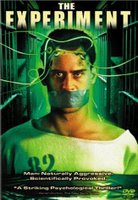Lightning Has a Long-Distance Conversation
 Space shuttle videos suggest lightning bolts can 'coordinate' strikes over hundreds of kilometers
Space shuttle videos suggest lightning bolts can 'coordinate' strikes over hundreds of kilometersBy Mason Inman
ScienceNOW Daily News
9 December 2005
SAN FRANCISCO, CALIFORNIA--The jury may still be out on whether lightning can strike the same place twice, but a new study gives the public another riddle to ponder: Can distant lightning bolts talk to each other? Evidence gathered from space shuttle recordings indicates that, rather than being randomly distributed, lightning flashes appear to be coordinated, even when they're far apart.
Coordinated lightning behavior has been observed before, but only over short distances. Over the past 30 years, however, astronauts who watched thunderstorms from space reported believing that lightning strikes influence each other even when hundreds of kilometers apart, a phenomenon astronaut Edward Gibson called "sympathetic lightning bolts."
Planetary scientist Yoav Yair of the Open University of Israel hoped to confirm these tales. To look for patterns in the sequence of lightning strikes, Yair and colleagues used a branch of mathematics called network theory--an approach often used to analyze connections between people. Much like players try to connect actor Kevin Bacon to another actor via the movies they've performed in together in the game "six degrees of Kevin Bacon," lightning bolts can be grouped by those that occur close together in time.
When the researchers analyzed videos filmed from the shuttle Columbia before it broke up on reentry, they found that lightning strikes did not flash randomly throughout a large storm system. Rather, there were a few central lightning hot spots--analogous to popular actors who have been in many movies. Flashes at these hot spots were often quickly preceded or followed those at other locations. Network theory implied that there may have been a relationship between distant strikes.
Though the study does not prove that one lightning strike can trigger another hundreds of miles away, "it suggests there is some hidden connection," says Yair, who reported his findings here this week at the American Geophysical Union meeting. Perhaps lightning's language is made up of so-called whistlers, he says, wherein lightning strikes cause electrons in Earth's upper atmosphere to rain down at a distant spot.
Lightning physicist William Boeck of Niagara University in New York says long-distance coordination may be possible, but he favors another mechanism: Electromagnetic waves released by a lightning bolt might bounce off Earth's surface and trigger lightning elsewhere.
Related sites
Videos of lightning seen from the space shuttle over Argentina
And Over the Mediterranean Sea (5.7 MB)
NASA lightning research
National Oceanic and Atmospheric Administration information about lightning
Planned NASA satellite for mapping lightning
link to original article













0 Comments:
Post a Comment
<< Home